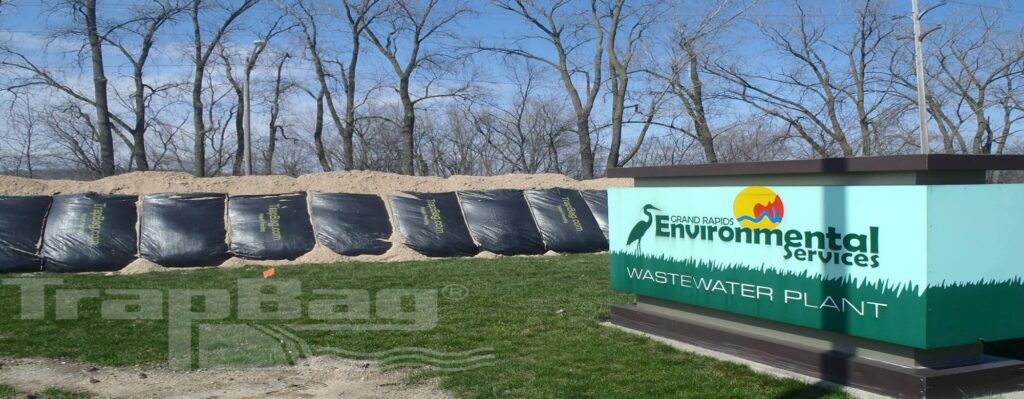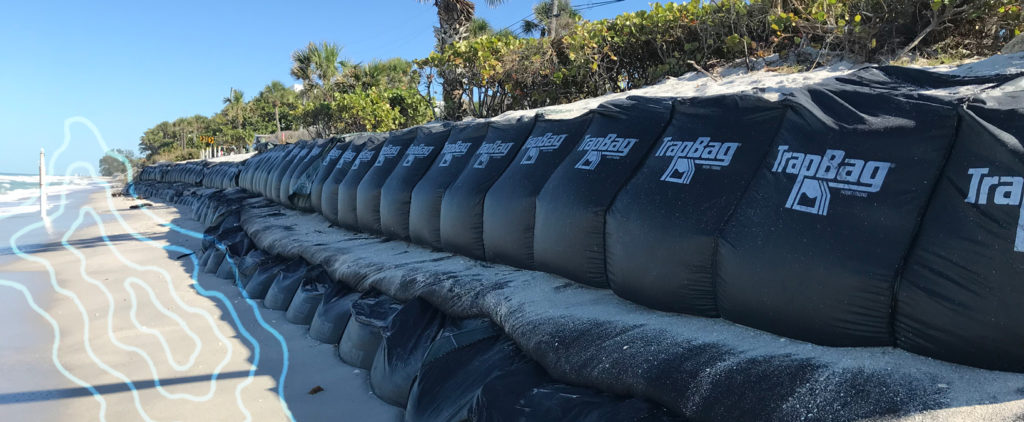Control Barriers for Public Works and Government Agencies
Avoid incoming disasters with TrapBag control barriers. Anything from erosion, flooding, mudslides, and construction needs in public works can be covered.

TrapBag Control Barriers for Public Works Projects
A work crew cannot construct some barriers without the use of heavy equipment, large concrete walls, for example. Other types of barriers are rapidly deployable. If time is of the essence, these barriers can be temporary, “quick fixes,” which implies unreliability.
However, this does not need to be the case.
TrapBag control barriers combine two benefits into one system in the form of tough bags, ready to be filled with material, granting the ability to rapidly set up a barrier system for short or long-term use. On top of this, they offer great versatility with applications ranging from soil erosion to flood protection.
The broad range of applications means that a government agency can quickly hire work crews and use TrapBags to create barriers wherever needed when mother nature strikes. This flexibility can mean constructing a seawall before a hurricane or containing a surging river within hours.
The results speak for themselves. In a hundred-foot section of a 4 ft. high wall, TrapBag uses 40% less fill material than 8,000 sandbags for the same job.
They’re made of high-strength textile and come in 50 ft. sections that connect, another advantage they have over sandbags.
Control Barrier Solutions for Public Works and Government Jobs
TrapBags for City Planning
TrapBags have many public works solutions when it comes to city planning because they are so versatile. The same group of bags can do everything from redirecting water to containing earth.
Stormwater may threaten an area, so the city can use bags to hold back or contain the water until the danger passes.
However, these bags are not limited to controlling water. In construction projects that involve roads, bridges, and sidewalks, barriers are often necessary to redirect traffic. Workers can quickly layout and fill these bags to form any barriers needed on any project.
TrapBags for Natural Disaster Emergency Response
TrapBags are particularly useful in public works projects when it comes to natural disasters. The main reason for this is that city planners can rapidly and cost-effectively construct barriers in areas vulnerable to mother nature.
A great advantage to TrapBags is their ability to contain, or hold back, almost any liquid or type of earth. Having such versatility means the same wall can stop a flood, a landslide, or a mudslide.
Likewise, coastal towns and cities may have little warning time to construct a sea wall, and the same bag used for everything else can provide a sturdy wall.
TrapBags for Environmental Protection
Another instance that calls for a barrier is when a public space has to deal with soil erosion. Erosion can come in many forms ranging from loss of coastline, riverbank, or loose soil sliding downhill.
As with the other uses, deploying the bag system in a variety of different shapes, for many purposes, acts as its best advantage. It makes no difference if it needs to serve as a barrier to something liquid or solid.
Having one type of barrier that works for liquids and solids also means that public works can efficiently construct what it needs in an emergency, but the barrier can also withstand the test of time.
TrapBags for Public Safety
Because of their association with sandbags, TrapBags likely put an image in people’s minds of only providing emergency flood protection. This association could not be further from the truth.
These bags are so versatile that public works might find them useful for the same reason the mining industry does: They can also contain certain types of chemicals.
In the event of a chemical spill, just like a car crash, crime scene, or riot, a crowd might need to be immediately evacuated or cordoned off from an area with the protection of something as substantial as a wall.
This system is far slower than pushing people back, but a crew can build a barrier quickly.
TrapBags for Construction
Many towns, and large cities, in particular, are constantly under construction. In the middle of congestion, many projects need barriers to redirect traffic, protect people and equipment, and prevent trespassing.
City workers can also set up cofferdams to provide a dry, safe work environment inside a body of water.
In addition, as a construction project evolves, public works might need to alter walls and barriers to keep up. Whether the city prefers barriers to stay in place or move around, this system is easy to manage because it consists of interlocking bags.
Plan your next project today with TrapBag
Check out why government agencies and public works use TrapBags to protect people and public lands. Contact us today to get started on your project.

